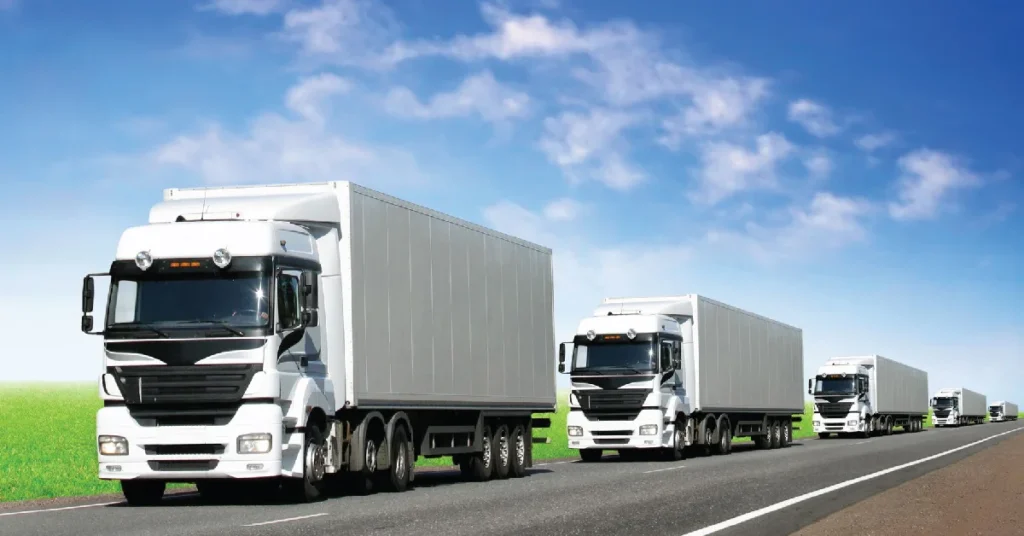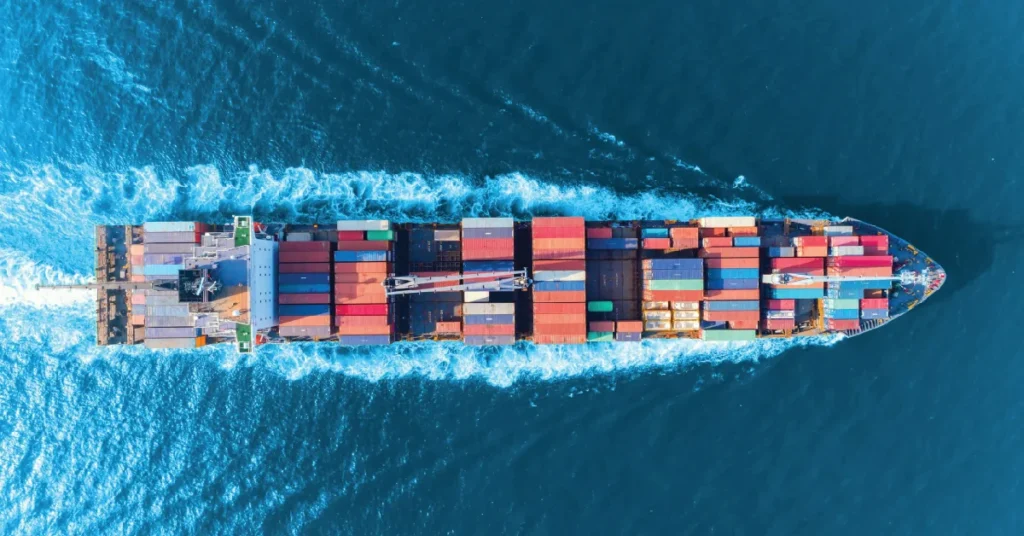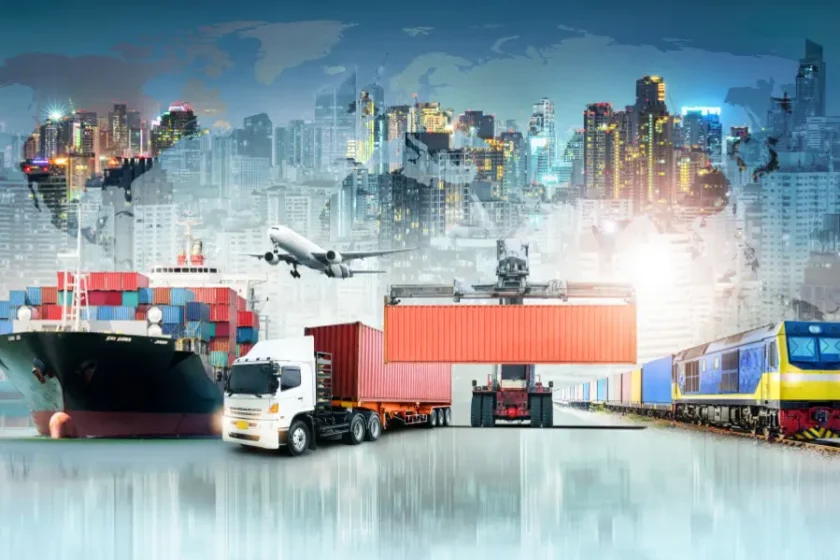In today’s world, organizations all around the globe need a variety of freight solutions. The modern supply chain gives these solutions to meet the needs of these companies. Professional logistics experts give highly valuable insights so that companies can transport goods anywhere in the world. To transport your shipment people need multiple freight options depending on their products, suppliers, and trade patterns.
The major ways one can ship their goods are via air, road, and sea. In the logistics industry, the method you use depends on the goods you’re shipping, where you’re shipping from, and the destination where it is being shipped. When you know the pros and cons of these modes of freight the understanding of which mode is the most suitable one for your transport will be clear.
Types of Freight Shipping

When it comes to transporting goods, choosing the right shipping method can make a huge difference in cost, speed, and efficiency. We will discuss in detail the key freight shipping types which include LTL (Less Than Truckload), Air Freight, Sea Freight, Truck Freight, Standard Freight, and Flat Rate Shipping.
1. LTL Freight Shipping
Less Than Truck Load Shipping (LTL) is a great option for customers who have smaller loads to ship because this method combines shipments from several customers into one truck trailer.
- LTL shipping involves transporting smaller shipments that do not require a full truck.
- Freight from multiple businesses is combined into one truck to maximize space efficiency.
- It’s cost-effective for businesses with smaller quantities of goods.
- Shipping costs are based on weight, dimensions, and the distance traveled.
- Delivery times may be longer due to multiple stops for other customers.
- Freight is often moved between several terminals before reaching the destination.
- LTL shipments are ideal for shipments ranging between 150-15,000 pounds.
- Carriers use pallets or crates to consolidate goods, minimizing damage risks.
- Many LTL carriers offer services like lift gates and inside deliveries.
- It’s suitable for businesses that don’t need urgent delivery.
2. Air Freight Shipping
Air freight shipping systematically includes the movement of goods through charter or commercial air carriers. Apart from being the fastest medium of transporting goods across the corners of the World, this type of shipping deliver products to diverse places as the domestic or international markets permit.
- Air freight shipping can be defined as a quick form of freight for heavy parcels via air.
- It is the most preferable option when shipping an item covering a long distance.
- Airfreight is most appropriate for those transporting goods that are delicate, or expensive.
- Rates are charged for goods on two measures, ie bulk or volume factors.
- Air transport is more expensive compared to shipping overseas or by truck.
- Duration of the delivery for the shipment typically is done within the 1 to 3-day limit.
- It’s also regarded to be the most dependable option, which involves the highest levels of accuracy in the security of goods and monitoring of the delivery process.
- All the airports share easily available customs and freight futures for international movement.
- For the security of moving sensitive items, for example, medical gear and electronics, air freight is always needed.
3. Sea Freight Shipping

Sea freight shipping, consists of ocean material transport of large items imported in standardized size cargo containers. Generally, shipping containers are retained in the shipping vessels at any major ports located all over the globe and proceed along predetermined freight routes to achieve the main objective.
- Sea freight, also known as ocean freight, is the use of cargo ships to move goods.
- It is the cheapest mode of transport for heavy and bulky goods, especially for long distances.
- Containers are also utilized in transporting items to prevent them from being damaged due to weather and rough handling.
- Shipping can be either FCL (Full Container Load) or LCL (Less-than-container Load).
- Shipping times are likely to be extended, and the duration can be anywhere from 20 to 40 days, depending on the shipping route.
- Sea freight can move a variety of cargo which includes heavy equipment such as cars.
- Air freight costs are higher than sea freight costs but are dependent upon the volume of the container, the weight of the container, and the universal destination of the container.
- It is more eco-friendly as compared to air freight as it results in lesser emissions per ton of cargo.
- Designing for related services such as procurement shipping for port storage facility management, and clearance of goods.
4. Truck Freight Shipping
FTL or Full Truck Load shipping refers to the situation in which one person fills up the whole truck to carry their goods from one place to another. Some customers may also put a partial load on their own in one truckload. This option is practiced by many companies like TEU Global as it is considered less time-consuming than LTL.
- Freight transportation is mostly used for intercontinental or intra-country shipment.
- Several classifications of truck freight include Full Truckload FTL and Less-than-Truckload LTL.
- FTL is appropriate in cases where the shipper has an urgent need for a truck and where there is no way for split delivery.
- Trucking gives a great extent of domain in terms of the routes used and also in terms of door-to-door deliveries.
- It is usually less expensive than air freight composure but cheaper than sea freight for short distances.
- Refrigerators and hazardous categories of cargo can comfortably be shipped by trucks.
- Although the range within which the delivery takes may be breached, the time taken in most cases is from 1 to 5 days for deliveries made internally.
- It is great for few and many distances and allows domestic as well as interstate trade.
5. Flat Rate Freight Shipping
Flat-rate shipping involves a charge that is fixed irrespective of the weight or size of the package as long as it meets a certain dimension defined by the freight company. This is a very good way of shipping planned items without the stress of measuring the distance and the weight of the shipment.
- Flat rate freight shipping means fixed price will be charged for shipping irrespective of the distance or weight of the goods.
- It is used for standard shipping within a particular distance and weight.
- The shipping costs of freight are predetermined based on the average distance.
- Many wholesalers prefer using flat-rate shipping when they have a lot of goods.
- This process simplifies budgeting since the cost is predictable and stable.
- It can be used for LTL, air freight, and even parcel shipment.
- This process is less sensitive to weight or dimensional weight.
- Businesses that ship within a specific geographic area with set parameters use this mostly.
- It also assists businesses in avoiding extra charges, especially related to fuel or speed delivery.
6. Standard Freight Shipping
The most typical method used for shipment by most carriers is Standard shipping. It is a method in which cost is determined by the weight, size, and destination of the package. This method is used for deliveries that are not urgent, which makes it more balanced. It is more affordable for smaller shipment items, and it is very reliable for organizations that do not want immediate delivery. The delivery speed and cost both are normal not very fast and not very slow either.
- This method of shipment of goods is the most basic level of freight transportation.
- Ground and sea are the options it chooses for the transportation of goods from one place to another, i.e., trucks or ships.
- It has the most reasonable delivery time which makes it quite balanced.
- It is not good for urgent deliveries which need express services.
- It takes up to 3-10 days to complete the domestic process, whereas it might take many weeks for international delivery.
- It doesn’t include a guaranteed delivery date to the users.
- This process is cheap compared to other freight options.
- This method is mostly used for bulky and larger volume items.
- This process works best for companies that want fewer logistics expenses.
Conclusion
To summarize, it is necessary to comprehend the different categories of freight shipping LTL, air, sea, truck, flat rate, and standard especially when trying to enhance the logistics of a business and how it meets delivery expectations. Each shipping method can be evaluated based on freight cost analysis, freight shipping speed, and the weight or volume of goods being transported, making it essential to choose the option that best fits your needs.the weight of the goods transported hence the need to ensure that the best one fully fits one’s needs.
Whether you are sending out a few small parcels or hundreds of large containers, choosing the right freight method can help you run your business operations more efficiently and satisfy your customers.



